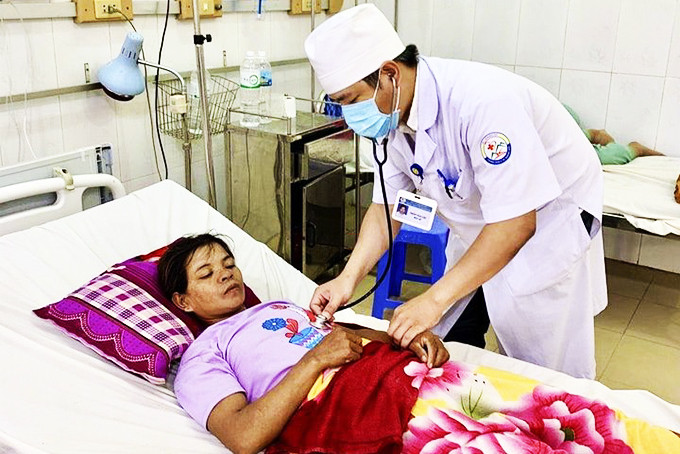
Khanh Son District heath sector, Khanh Hoa, has taken various measures to improve community health care. Thanks to the effort, many in mountains areas have had chances to access quality medical care...
Khanh Son District heath sector, Khanh Hoa Province, has taken various measures to improve community health care. Thanks to the effort, many residents in mountains areas have had chances to access quality medical care, thus reducing patients transferred to higher levels of care.
Reproductive health care
A woman named Mau Thi Tang, who gave birth to her first baby at home by herself in Ba Cum Bac Commune, has come to hospital for the delivery of her second baby. Thanks to propaganda of health officials, local residents’ health care awareness has much improved. The number of home births has decreased from 64 in 2015 to 33 with the birth deliveries at health facilities reaching 92%, up by 2% compared with the same period last year; 98% under pregnancy management, up by 0.3%; pregnant women having prenatal check-ups 3 times reaching 80%, up by 7%, etc.

|
In addition, thanks to integrated propaganda and provision of reproductive health care services in remote areas, many women have had access to contemporary methods of contraception. Since the beginning of the year, 1,700 women have taken contraceptives, up 16%, nearly 500 have used condoms, up by 17%; and nearly 600 women have searched for reproductive healthcare services, up 28%. “I have 4 children with the youngest, 5 months old. I don’t want to have more children. Doing farming work, we are unable to cover basic needs for bringing up children. After advised by commune health officials, I have chosen contraceptives to prevent further unexpected pregnancies,” said a resident named Bo Bo Thi Kieu, Ta Nia, Son Trung Commune.
With such on-going effective measures, the district has strived to reduce the birth rate to 0.35‰, couples with three children or more to 1%; and stabilize the birth rate, contributing to improving population quality in the district.
Fulfilling national target health programs
Besides activities mentioned above, the improvement in comprehensive health care has been strengthened by the district health sector. Many new treatment techniques and therapies have been successfully deployed such as color ultrasound, testing, digital radiography, obstetric surgery and appendectomy, gradually bringing practical treatment effectiveness in mountainous areas. The supply of medical equipment has been focused, with 80% of medical stations in the district fully equipped as required. Some medical stations have been strengthened with doctors from the district-level of care. Since the beginning of the year, patients transferred to a higher level of care has decreased by 7.45% compared to the same period last year; only 1 case of obstetric complication, down by 6 cases, has been reported; medical examination has been given to nearly 20,500 people; and inpatient treatment for nearly 2,000.
The prevention and control of infectious and non-infectious diseases and national health target programs have been well implemented. 100% of communes and towns have maintained community mental health activities. 778 patients with hypertension and 48 with diabetes have been under treatment management; 90% of children in annual open immunization coverage; and more than 90% of the elderly receiving treatment at medical facilities, of which more than 42% having periodic health checks and health records. Especially, thanks to propaganda promotion, only 1 case of malaria has been reported in the district since early 2020, down by 80%, over the same period last year.
The district health sector has focused on development workforce over the past years. The District Medical Center annually sends its medical officials to physician training courses. Medical training has been expanded for ethnic minority health officials under a nomination policy. The number of doctors has increased from 7 in 2015 to 20, accounting for 8 doctors per 10,000 people. The center has focused on professional development for surgery and obstetrics staff who are expected to master techniques at level- 3 hospitals, thus improving medical treatment and care and helping ease the burden on hospitals at higher levels, according to Doctor Ho Ngoc Gia, Director of the District Medical Center.
In addition to professional development, the district health sector will also focus on raising local awareness, further promoting mountainous people’s access to health services in the coming time.
C.Dan
Translated by N.T






